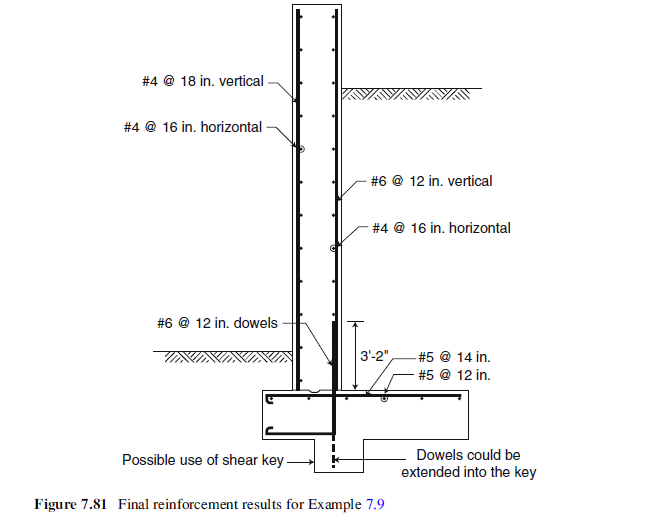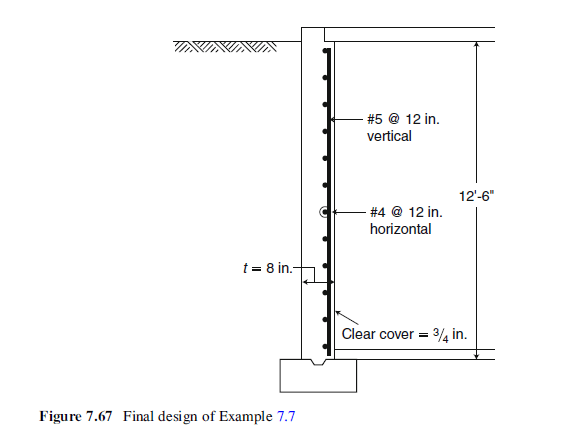oengineer
Structural
- Apr 25, 2011
- 731
I know that reinforcement is used in concrete & masonry materials due to them being weak in tension.
I have seen in some reinforced concrete text books that the main/primary layer of reinforcement to be placed on the face of the wall that the load is acting on.
(See Example image)

In the image shown above the main/primary reinforcement are the #6 @ 12"o.c. and they are shown on the side that the soil is acting, which is the forces the wall is deigned to resist.
But another wall for a basement has the reinforcement shown on the interior side of the building not adjacent to the soil, which is the load being resisted.
(See Example image below)
wa
 ll
ll
Based on engineering principles, it would be because the basement wall is designed as a simply supported beam, with tension on the interior face of the wall.
Likewise, the retaining wall is designed as a cantilever beam with tension on the exterior face of the wall. Which is where the reinforcement is located.
I am trying to make a point to a colleague.
Comments are appreciated.
I have seen in some reinforced concrete text books that the main/primary layer of reinforcement to be placed on the face of the wall that the load is acting on.
(See Example image)

In the image shown above the main/primary reinforcement are the #6 @ 12"o.c. and they are shown on the side that the soil is acting, which is the forces the wall is deigned to resist.
But another wall for a basement has the reinforcement shown on the interior side of the building not adjacent to the soil, which is the load being resisted.
(See Example image below)
wa

Based on engineering principles, it would be because the basement wall is designed as a simply supported beam, with tension on the interior face of the wall.
Likewise, the retaining wall is designed as a cantilever beam with tension on the exterior face of the wall. Which is where the reinforcement is located.
I am trying to make a point to a colleague.
Comments are appreciated.




